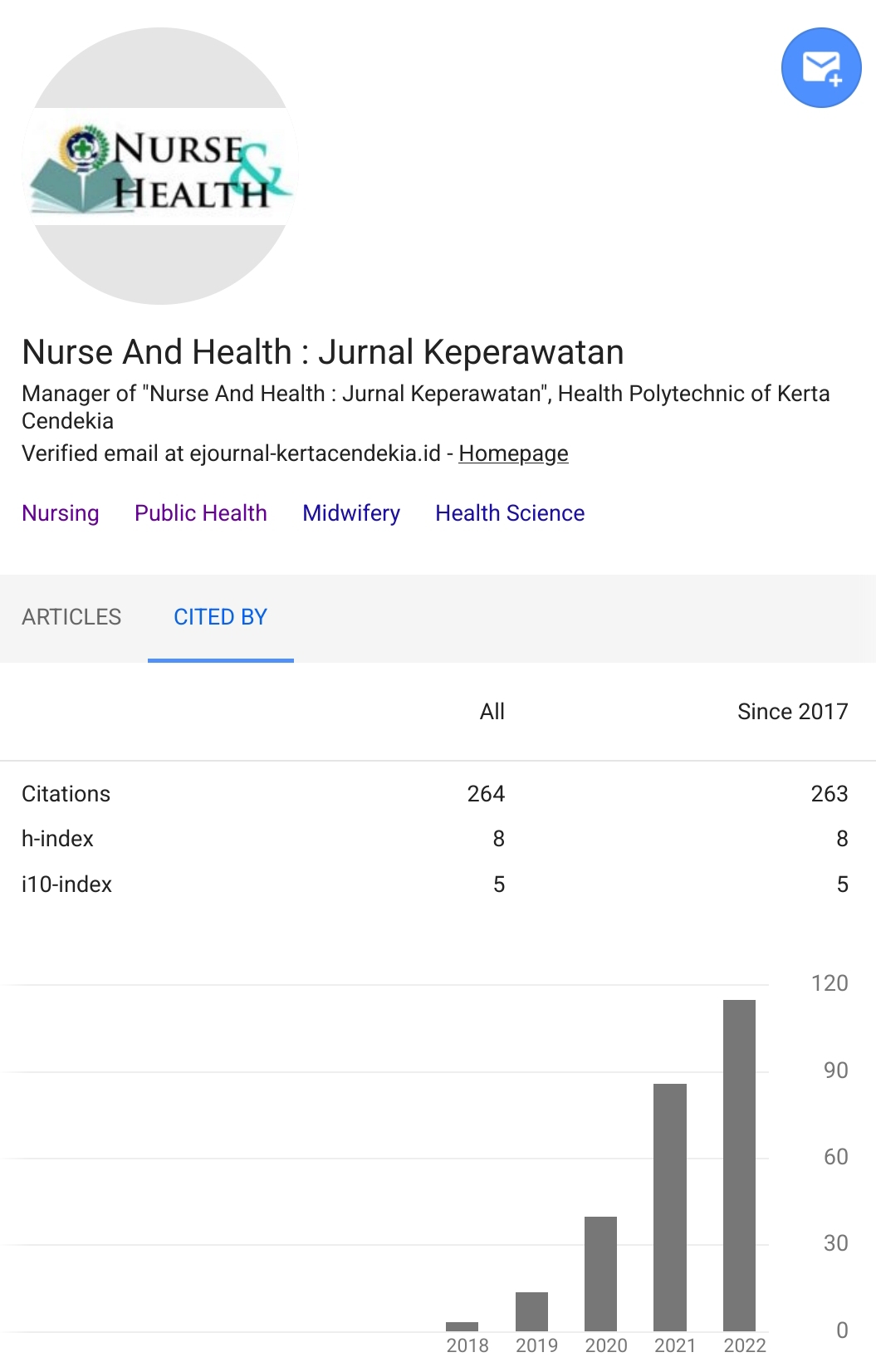CORRELATION BETWEEN RESPIRATORY FREQUENCY (RR) AND OUTCOME IN HEAD INJURY PATIENTS IN EMERGENCY ROOM OF BANGIL HOSPITAL, PASURUAN DISTRICT
Abstract
Background: Head injuries are a major cause of disability and death under the age of 45 years. The main focus on handling head injury patients is to prevent and limit the occurrence of secondary brain injury which will ultimately affect the outcome of the sufferer. Emergency conditions in head injury patients certainly require quick and appropriate help for better outcome outcomes.Purpose: The purpose of this study was to determine the relationship of respiratory frequency with the outcome of head injury patients in the emergency department of Bangil Hospital Pasuruan Regency.Methods: This research method is quantitative with a cross sectional approach involving 53 respondents. The sampling technique uses purposive sampling method. The outcome of head injury patients was measured using the Trauma and Injury Severity Score (TRISS) scale.Results: Data were analyzed using the Spearman test which showed a relationship p value = 0.013 <α = 0.05 so that H0 was rejected or there was a significant relationship between respiratory frequency (RR) and the outcome of head injury patients.Conclusion: The need for improvement and development of nurse resources through nursing education, emergency training and evaluation of health services at the ED. Keywords: Head Injury, Respiratory Frequency (RR), Outcome.Downloads
References
Alligood, M. R. (2014). Nursing theory & their work (8 th ed). Toronto, Missouri: Mosby Elsevier. Inc.
Badan Pusat Statistik [BPS]. (2013). Statistik Transportasi 2013. Jakarta: Badan Statistik Indonesia.
Bieler, D., Franke, A., Lefering, R., Hentsch, S., Willms, A., Kulla, M., ... & TraumaRegister DGU. (2017). Does the presence of an emergency physician influence pre-hospital time, pre-hospital interventions and the mortality of severely injured patients? A matched-pair analysis based on the trauma registry of the German Trauma Society (TraumaRegister DGU®). Injury, 48 (1), 32-40. doi. 10.1016/j.injury.2016.08.015.
Letarte, P. (2008). Management of Spesific Injury : The Brain. Trauma. Edisi 6. USA: McGraw Hill.
Melo, J. R. T., Rocco, F. D., Blanot, S., Oliveira-Filho, J., Roujeau, T., Sainte-Rose, C., ... & Zerah, M. (2010). Mortality in children with severe head trauma: predictive factors and proposal for a new predictive scale. Neurosurgery, 67(6), 1542-1547.
Minardi, J., & Crocco, T. J. (2009). Management of traumatic brain injury: first link in chain of survival. Mount Sinai Journal of Medicine: A Journal of Translational and Personalized Medicine: A Journal of Translational and Personalized Medicine, 76(2), 138-144.
Riordan, W.P., Norris, P.R., Jenkins, J.M., Morris, J.A. (2009). Early loss of heart rate complexity predicts mortality regardless of mechanism, anatomic location, or severity of injury in 2178 trauma patients. Journal of Surgical Research. 156(2):283–289. doi. 10.1016/j.jss.2009.03.086.
Santoso, M. I. E., Rahayu, M., & Balafif, F. (2016). CORRELATION OF SEVERE HEAD INJURY EPIDURAL HEMATOMA TREPANATION RESPOND TIME WITH OUTCOME. Malang Neurology Journal, 2(1), 14-18.
Salim, C. (2015). Sistem Penilaian Trauma. Cermin Dunia Kedokteran 232. 42(9), 7–9.
World Health Organization [WHO]. (2013). Road Traffic Injuries. Switzerland. Retrieved at October, 2013 from http://www.who.int/mediacentre/factsheestfs258en.
Zamzami, N. M., Fuadi, I., & Nawawi, A. M. (2013). Angka Kejadian dan Outcome Cedera Otak di RS. Hasan Sadikin Bandung Tahun 2008-2010. Jurnal Neuroanastesi Indonesia, 2(2), 89-94.
Authors who publish with Nurse and Health: Jurnal Keperawatan agree to the following terms:
- Authors retain copyright licensed under a Creative Commons Attribution-NonCommercial 4.0 (CC BY-NC 4.0), which allows others to remix, tweak, and build upon the authors' work non-commercially, and although the others' new works must also acknowledge the authors and be non-commercial, they don't have to license their derivative works on the same terms.
- Authors are permitted and encouraged to post their work online (e.g., in institutional repositories or on their website) prior to and during the submission process, as it can lead to productive exchanges, as well as earlier and greater citation of published work (See The Effect of Open Access). Authors can archive pre-print and post-print or publisher's version/PDF.







_resize1.jpg)















